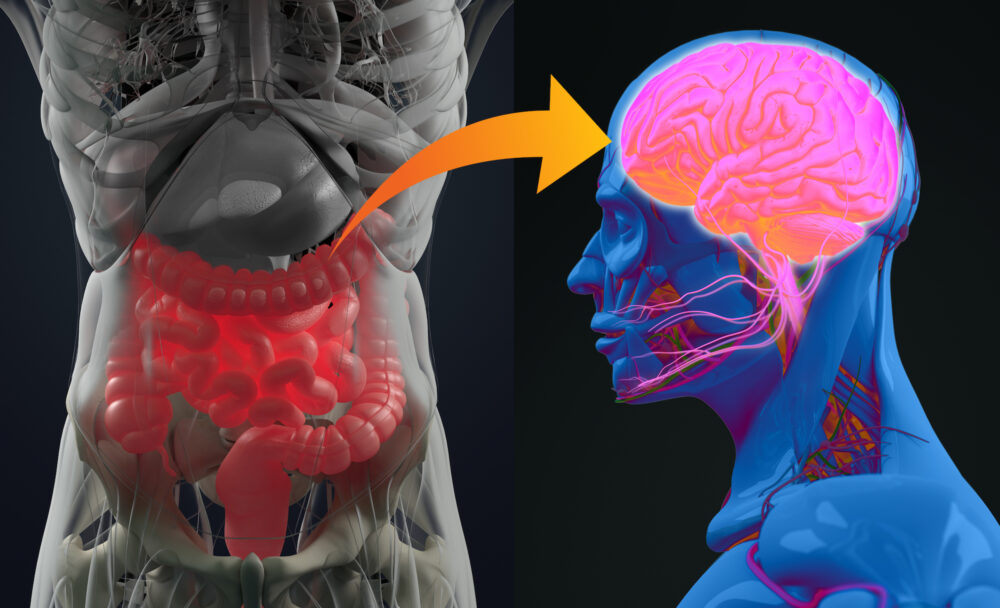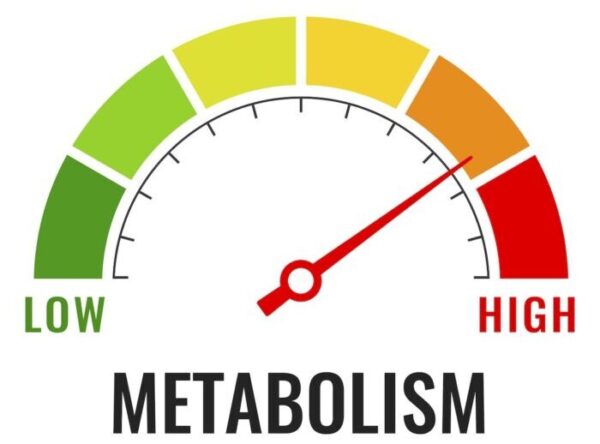Supporting the 'Hungry Brain' for Weight Loss
It is important when contemplating pharmaceutical interventions for weight loss to keep in mind it’s not “one size fits all.” Because everyone is different and will respond to interventions differently, treatment should truly be personalized and combine different modalities. This article will address the hungry brain phenotype outlined in some of the research on precision obesity treatment.
What is the 'Hungry Brain' Phenotype?
The ‘hungry brain’ phenotype in a precision medicine model of obesity applies to people who struggle with increased thought patterns around food and trouble with satiation. Satiation is the calories consumed to reach fullness and terminate the meal. It is a complex interplay between the gut hormones and our brain’s appetite center in the hypothalamus that is involved in satiation. People who have a hungry brain report that “I eat good things, just too much at my meals” or “I have trouble stopping once I start eating.” I think of this phenotype as a volume eater.
In my clinical experience around this, when someone is struggling with a hungry brain, there is a lot we can do to support them on their weight loss journey from a lifestyle, nutraceutical, and pharmaceutical perspective. I do think that some of the new medications such as semaglutide (trade names Ozempic and Wegovy) that target GLP-1 can help the ‘hungry brain’ phenotype. See my article on the ‘hungry gut’ as that is the other type of person these medications may be of use to.
What is the Hypothalamus?
The hypothalamus is an area of the midbrain that houses the metabolic control centers of the body. It turns out that the POMC (proopiomelanocortin) neurons in the hypothalamus have receptors for GLP-1 which is naturally released by the small intestine and triggers the release of inhibitory neurotransmitters which then causes inhibition of food intake. This seems to be involved in the central nervous system’s effects on energy intake and body weight. The overall effect is that stimulation of these neurons by GLP-1 is anorexigenic (weight loss promoting). There is data supporting that POMC pathways are involved in the regulation of body weight.
This area of the brain is also responsive to the hormone leptin. Produced by fat tissue, it is also a signal to the brain that is anorexigenic. The problem is that with obesity, leptin levels are commonly too high and there is dysregulation of this system in the brain and thus dysregulation of body weight setpoint. When leptin levels are too high, this is pro-inflammatory. Working to balance leptin may help a little bit with the ‘hungry brain.’
Natural Ways to Satiate the ‘Hungry Brain’
Time-restricted eating. Strategies that I find helpful for people with the ‘hungry brain’ are sometimes counterintuitive. Intermittent fasting and time-restricted eating actually work pretty well for this phenotype as people find it hard to stop eating once they start. In this way eating less frequently allows for this type of person to reduce their caloric intake by reducing their eating frequency. In addition, fasting also reduces leptin which in obesity is often in excess.
Fill up with non-starchy voluminous veggies. Another natural way to work around the ‘hungry brain’ is to eat large volumes of food that are low caloric such as non-starchy vegetables with some healthy fats. This allows the person to feel satiation without increasing caloric intake to trigger the stop-eating signal.
Increasing protein. This promotes POMC and results in overall increased satiation. This is intuitive, grade how satisfied you are after a meal that is high in protein vs one that has minimal protein.
Nutraceuticals That Calm the ‘Hungry Brain’
Nutraceuticals that support POMC and leptin pathways in the hypothalamus which are felt to be dysregulated in obesity in which the body is defending a higher body weight setpoint may be useful.
Gaba-Aminobutyric Acid (GABA) is an inhibitory neurotransmitter found in the brain. Animal studies and limited human studies reduce appetite when supplemented with GABA. There is controversy around GABA supplementation and how it may not cross the blood-brain barrier. Perhaps the impact is via the nervous system associated with the gut and the gut-brain connection. In one animal study, oral GABA supplementation seemed to exert its anorexigenic via messages through the vagus nerve traveling from the gut back up to the brain.
Glycosaminoglycans are famous for their use for collagen and connective tissue support used for arthritis. Glucosamine and chondroitin are examples of glycosaminoglycans. They also have an impact on the brain and are involved in the pathways with leptin. When leptin levels are high, glycosaminoglycans can help modulate this as well as the inflammation associated with elevated levels of fat tissue.
Pharmaceutical Support: GLP-1 Agonists
GLP-1 agonist medications (like Ozempic and Wegovy) work centrally in the brain so there is less overall hunger at baseline. However, the real advantage is for activation of satiation by way of these POMC neurons. The threshold is lower on these medications which means that the signal to stop eating happens earlier in the meal. People taking medications such as Ozempic and Wegovy describe less focus on food in general and become full quicker and are overall less hungry. These medications can be powerful tools in allowing a person to sustain a lower calorie intake over the long term which is required for weight reduction.
What is the long game with GLP-1 medications? In other words, biologically when we externally stimulate a pathway, the body often compensates, that is what homeostasis is all about. The body is always seeking balance. When stimulating these neurons, the body almost gets used to it and then there is a rebounding effect when the medications are stopped. I liken this to the analogy of having one foot on the brake in a car, the body puts the foot on the gas to compensate and when we take the foot off the brake, there is over-acceleration. In other words, a significant increase in hunger with discontinuing the medications. The thought is that obesity is chronic and a maintenance dose will be needed. Otherwise, at the very least, careful step-down with attention to lifestyle factors and natural ways that can support GLP-1 is needed when these medications are used.
Pharmaceutical Support: Topiramate
Topiramate is a medication utilized for seizures but it has been repurposed for weight loss since it was found to be a common side effect. It turns out that the mechanism by which this medication works is likely via modulating those inhibitor GABA receptors which we were talking about earlier. This medication is used “off label” for weight loss. It is found in a commercially available weight loss medication, in combination with phentermine, called Qsymia. Phentermine is a stimulant weight loss medication that I most find useful for “slow burners” or people I suspect that have a slow metabolism as a driver for weight loss resistance.
Psychology of the ‘Hungry Brain’
It is clear that appetite and satisfaction with eating is a complex interplay between the gastrointestinal system, the fat, and the brain. So much of our past experience influences our behavior and I often think about the ‘Hungry Brain’ as the clean-the-plate mentality. Some of our habits, of course, stem from our childhood. If we grew up with the message “You must clean the plate before getting up from the table” then that early socialization could be part of the drive to do so as an adult as well. Recognizing the patterns of behavior is the first step in changing them. Mindful eating exercises can be helpful in creating new eating habits.
Other Phenotypes
References
Delgado TC. Glutamate and GABA in Appetite Regulation. Front Endocrinol (Lausanne). 2013 Aug 15;4:103. doi: 10.3389/fendo.2013.00103. PMID: 23966982; PMCID: PMC3744050
Caron A, Dungan Lemko HM, Castorena CM, Fujikawa T, Lee S, Lord CC, Ahmed N, Lee CE, Holland WL, Liu C, Elmquist JK. POMC neurons expressing leptin receptors coordinate metabolic responses to fasting via suppression of leptin levels. Elife. 2018 Mar 12;7:e33710. doi: 10.7554/eLife.33710. PMID: 29528284; PMCID: PMC5866097
Pessentheiner AR, Ducasa GM, Gordts PLSM. Proteoglycans in Obesity-Associated Metabolic Dysfunction and Meta-Inflammation. Front Immunol. 2020 May 19;11:769. doi: 10.3389/fimmu.2020.00769. PMID: 32508807; PMCID: PMC7248225
Farah, Daniela, and Marcelo Cunio Machado Fonseca. “Short-term evidence in adults of anorexigenic drugs acting in the central nervous system: a meta-analysis.” Clinical Therapeutics 41.9 (2019): 1798-1815
Rubino D, Abrahamsson N, Davies M, et al. Effect of Continued Weekly Subcutaneous Semaglutide vs Placebo on Weight Loss Maintenance in Adults With Overweight or Obesity: The STEP 4 Randomized Clinical Trial. JAMA. 2021;325(14):1414–1425. doi:10.1001/jama.2021.3224




